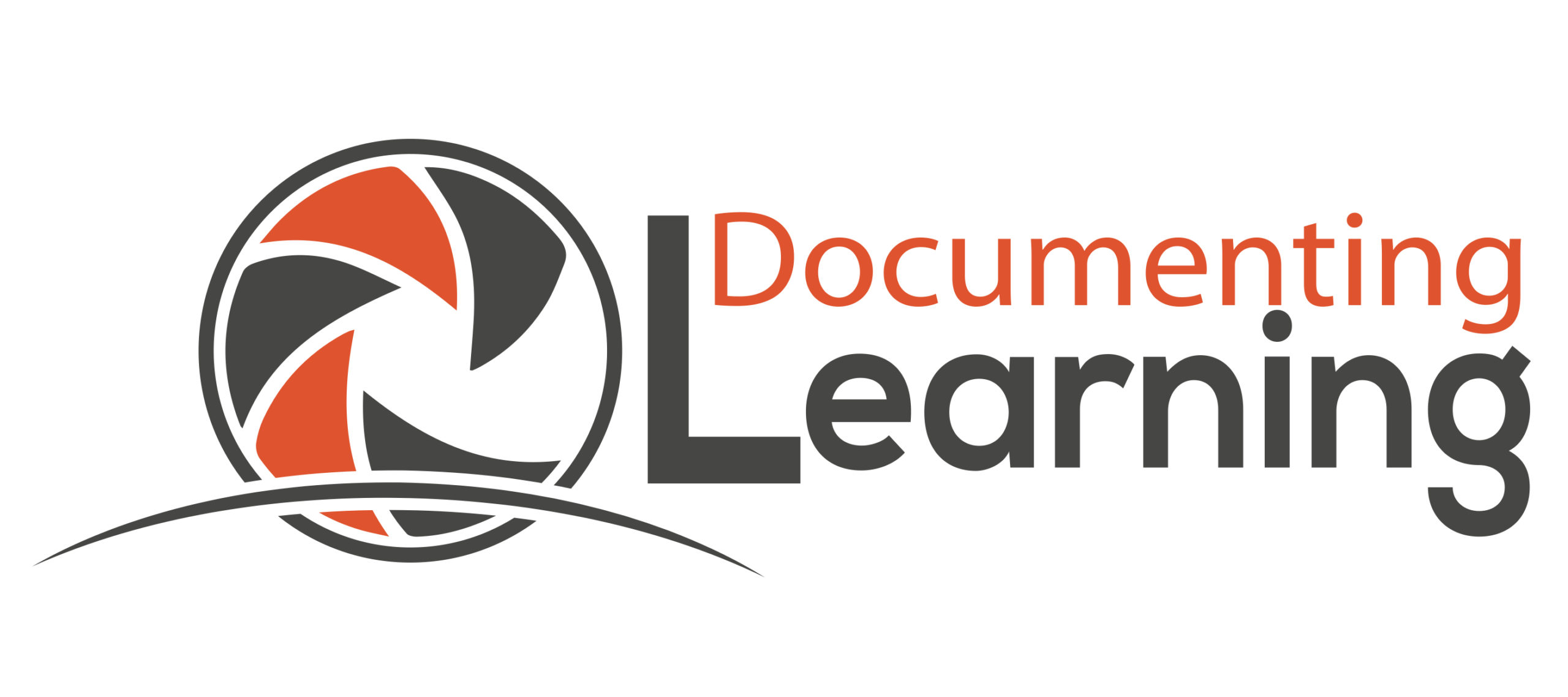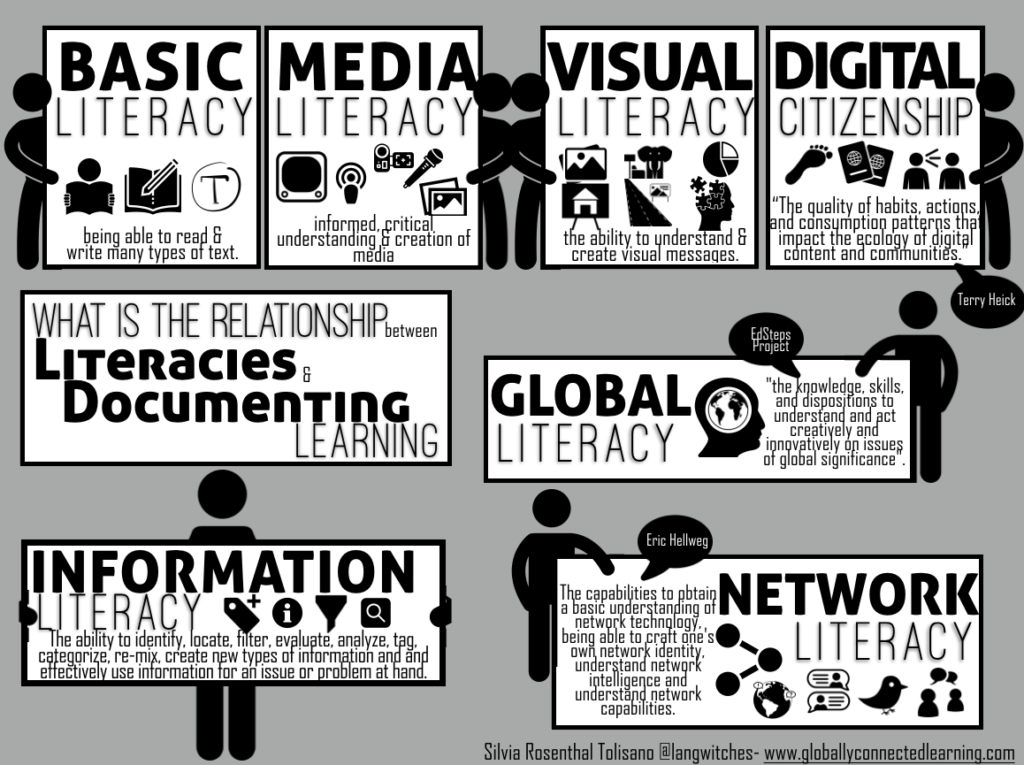The point of an education is to become literate ( a person that is able to read, write and communicate their ideas) and become productive citizens of society. Let’s define documenting learning as a visible, interconnected, meta-cognitive approach for creating evidence of one’s own learning process (or the learning process of our students).
I want to dig deeper into the relationship between literacy and documenting learning and make these connections visible.

This is the first post in a series of blog posts to look deeper into this relationship and document (no pun intended) my thinking. It is an attempt to give learners a better understanding of HOW documenting learning will have effects on their awareness, skills and developing habits around the so called 21st century “Now” literacies.
- Basic Literacy and Documenting Learning (see below)
- Media Literacy / Visual Literacy and Documenting Learning
- Digital Citizenship and Documenting Learning
- Global Literacy and Documenting Learning
- Information Literacy and Documenting Learning
- Network Literacy and Documenting Learning
In this first post, let’s take a deeper look at the relationship between Documenting Learning and Basic Literacy
Basic Literacy– let’s depart from the notion that we consider basic literacy as being able to read and write many types of texts.
How can documenting one’s learning (or the learning of your students) support the skills to foster, develop and strengthen basic literacy, the ability to read and write many types of text. With a simple Google search, we find Documentation defined as
- material that provides official information or evidence or that serves as a record.
-
the process of classifying and annotating texts, photographs, etc.
Documentation gets the thoughts out of our head and materializes them into words to make them concrete by giving them space on paper or on a screen. By articulating our thoughts, we are capable of sharing them with others. Documentation expresses what we think was important to highlight and captures moments in time, that otherwise could be forgotten in the future or misrepresented by failing memory. Documenting is about articulating for oneself and for others our thinking and learning strategies and outcomes. Documentation becomes a process that puts (connects) isolated thoughts, reflections, events, projects, attempts of meaning making and learning into a timeline and attempts to describe, explain, illustrate, understand, portray, classify and interpret the learning journey and its individual components and their relationships. Documenting learning attempts to capture what usually goes unnoticed. We become aware through the act of writing it down. Documenting learning makes what we consider evidence of learning and the journey itself visible.
Documentation can take on many different types of texts:
- Narratives can put individual documentation pieces in context, creating a storyline of the learning journey.
Ex. The Story behind Langwitches - Information Reports can be used to present specific information to show evidence of what content knowledge was acquired, processed, internalized and learned. They look at certain aspects of events that occurred. Documentation helps filter, organize, categorize, store and archive information.
Ex. Can Social Media Have a Role to Play in Managing a Successful Classroom? - Recounts help document what happened in chronological order.
Ex. Implementing Blogging in the Classroom & Evolution of Note Taking - Explanation makes it clear how something works, why it works or doesn’t work how it should or how it came to be. Documentation breaks down and supports each step of the explanation. These documentations give reasons behind actions.
Ex. Taxonomy of a Skype Conversation - Descriptions can give us specific details, features and characteristics of the setting, of our learning journey.
Ex. Digital Learning Farm in Action - Procedures give us instructions on how to make or do something. Documenting these step-by-step instructions support our own learning by breaking down a process to be able to reproduce at a later time and scale the procedure.
Ex. How to create a collaborative Class eBook - Research is an integral part of documentation, when the learners see themselves as investigators and action researchers with the goal of owning their learning, understanding their learning process, improve future learning and facilitate learning in others. Writing begins with reading and connecting to different facts, ideas and thoughts of others.
Ex. Quadblogging Reflection - Expository documentation tells or informs the reader through clear information.
Ex. What are the best ways to engage your classroom in global conversation & What are the best ways a Teacher can Demonstrate Leadership in the classroom? - Persuasive documentation tries to persuade or convince readers to a point of view, opinion or idea about an issue. Documentation can share how the author has experienced and reacted to an event, serving as an example for others. Documentation shows the passion the author has for a subject or topic.
Ex. 3 Reasons why your Should Share - Social Media documentation supports reading and writing in new forms. Through hyperlinks, @mentions and the use of #hashtags, we read and write in non-linear connected and networked ways. Being able to document on social media platforms (Ex. Twitter, blogs, Instagram, etc.) allows for a documentation of non-linear and asynchronous learning)
Ex. Unpacking a Twitter Conference Feed
As you can see, documentation can pretty much take on any type of text. When we document our learning (and the learning of our students) we are practicing and exposing the learner to basic literacy skills and habits.




